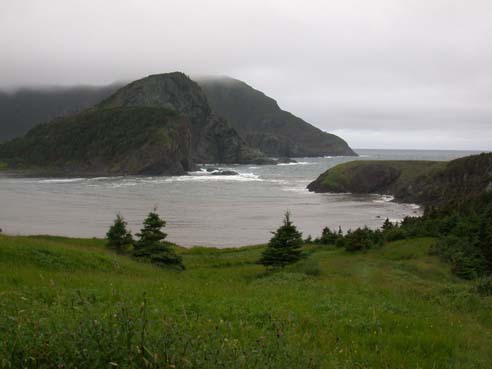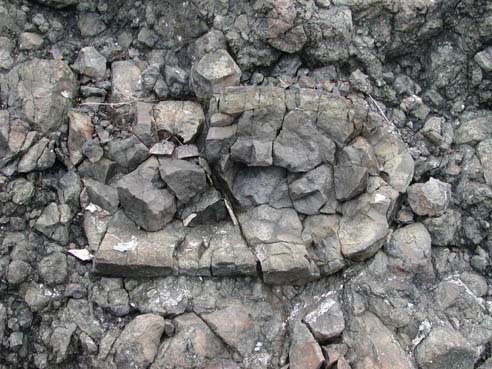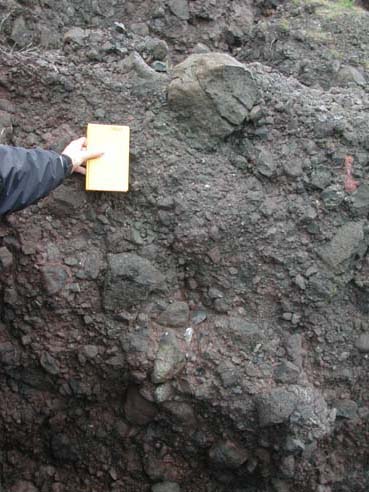North Head of Bottle Cove, Newfoundland
| Ophiolite Sequence
The rock sequence exposed at Bottle Cove is a portion of the ophiolite
sequence seen throughout various places in Newfoundland. Newfoundland
is one of the two places in the world were ophiolite sequences are
clearly exposed. The top layer of the sequence is the bottom of
the ocean floor
and the bottom layer ranges down to the upper layers of the Earth's
mantle. At Bottle Cove the top layer of the sequence, the bottome
of
the ocean floor is exposed. |
 |
 |
Pillow Lavas
At Bottle Cove the pillow lavas were the prominant feature. Pillow lavas
are created when basalt intrudes into a liquid. The formation of these
pillow basalts occurred in the ocean, near a mid-ocean ridge. The oval
shape of the pillow lavas causes the outside to cool relatively fast,
at times forming a layer of obisidion. The inside, though, cools relatively
slowly forming a concentric pattern that becomes larger towards the center.
The gabbro at this site was intruded onto the ocean floor through a sheeted
dike complex. The magma in the center of the earth heats up and then rises.
When it hits the crust it plutoons and creates a magma chamber, which
in turn causes fractures in the crust. These fractures allow the rising
magma to intrude onto the ocean basin forming pillow lavas. |
Faulting
These basalts and pillow lavas were formed in the Iapides Ocean in the
upper Cambrian (570 m.y.a.). This means it is older than the limestone
in the surrounding areas of Newfoundland. Therefore there is a thrust
fault that allowed this portion of the ophiolite sequence to be on top
of the Grenville Basement. It was uplifted when North America collided
with Europe. |
 |
 |
Little Port
Just up the road from Bottle Cove there is a breccia at Litttle Port Beach.
This breccia was probable created during collision and faulting. There
is a fine red matrix with angular rocks in it. There are interbedded shales
and carbonates. Also there are slickenslides and striation formed by the
rocks grinding against each other during faulting. This area is called
a mylange and it is a mixture of the oceans sediments as well as the layers
it was grinding against. This is further evidence of the uplift that the
ophiolite sequence went through during the collision between North America
and Europe.
|